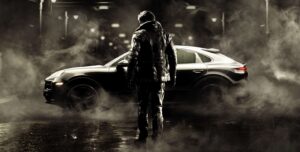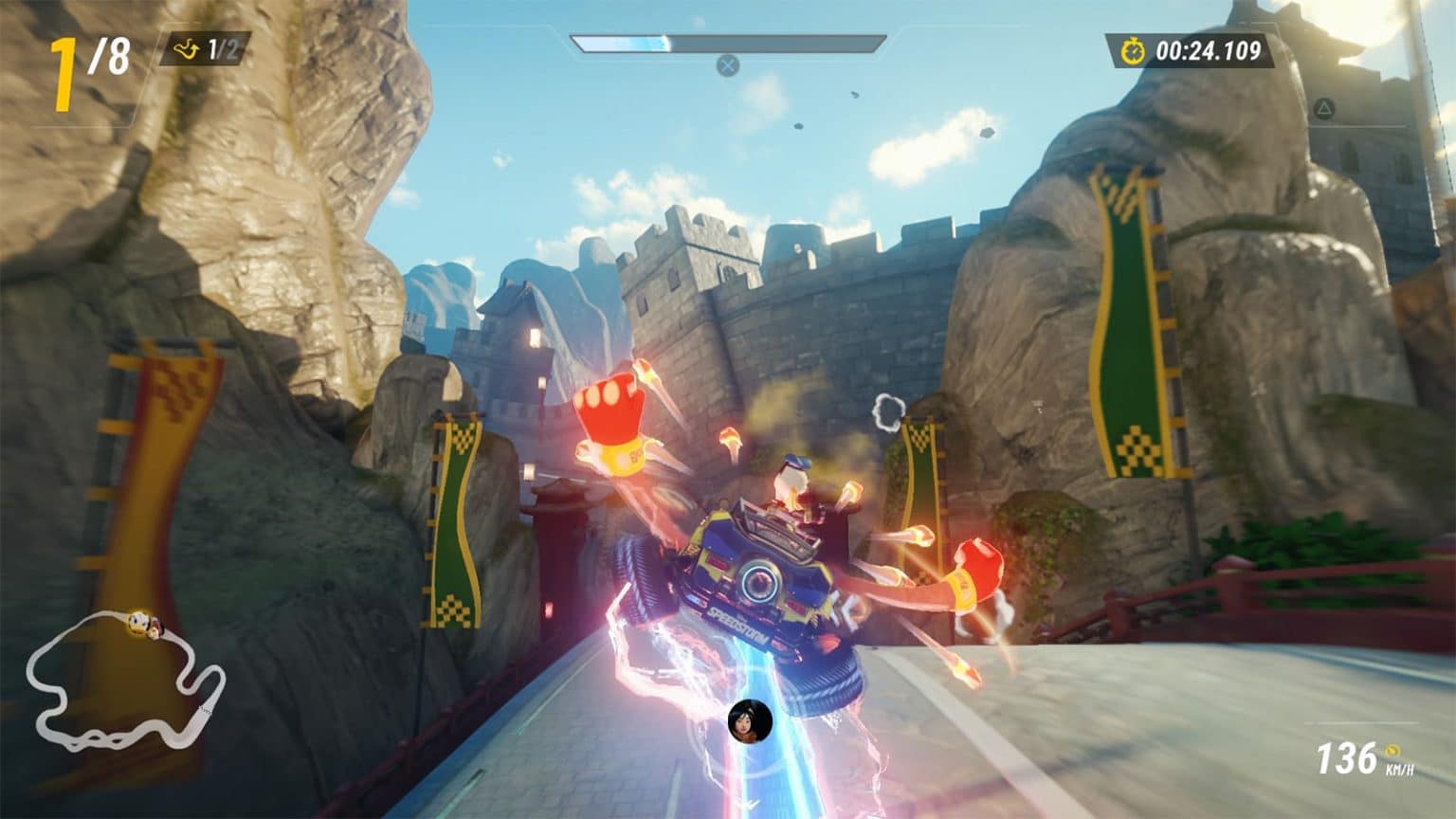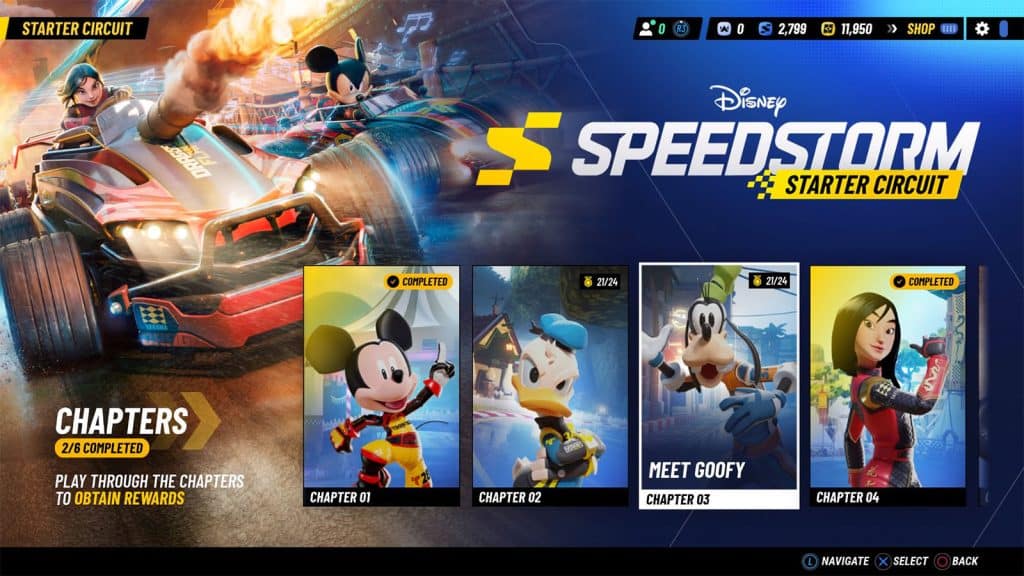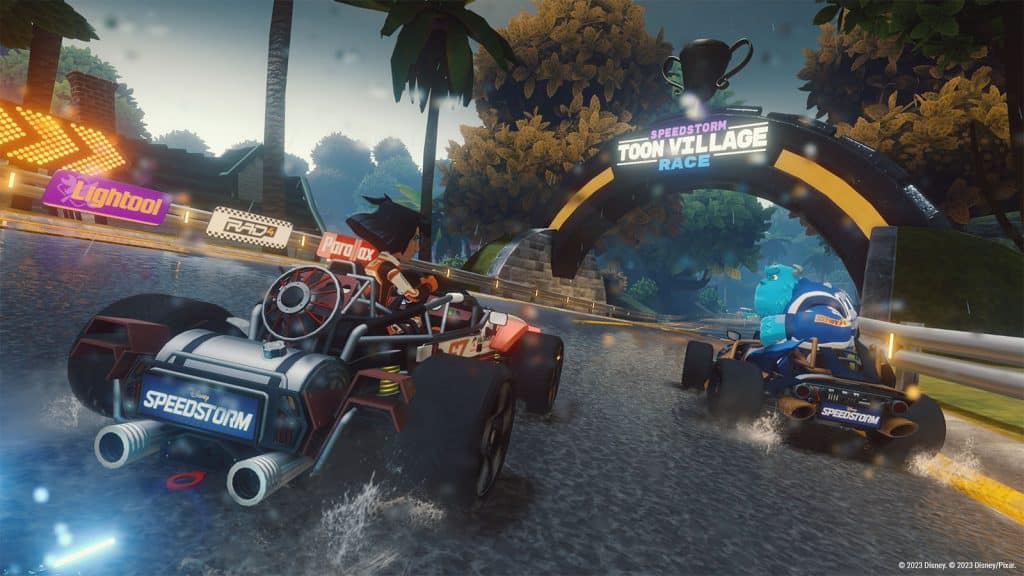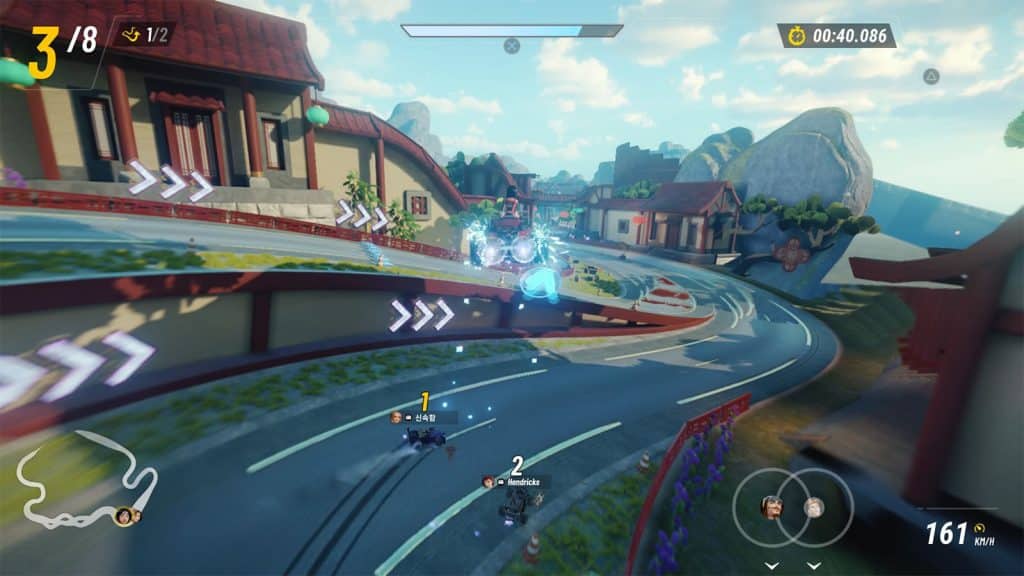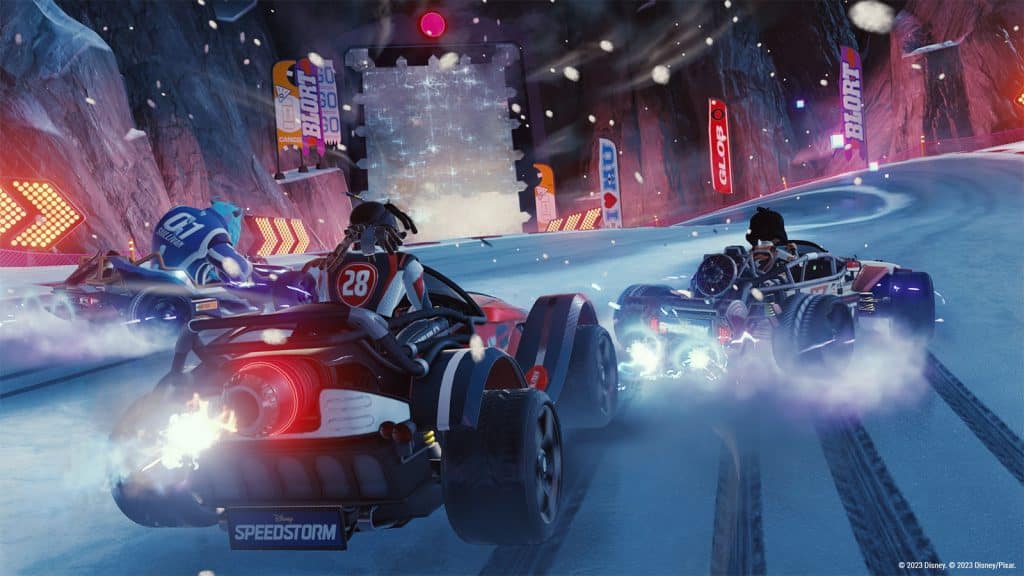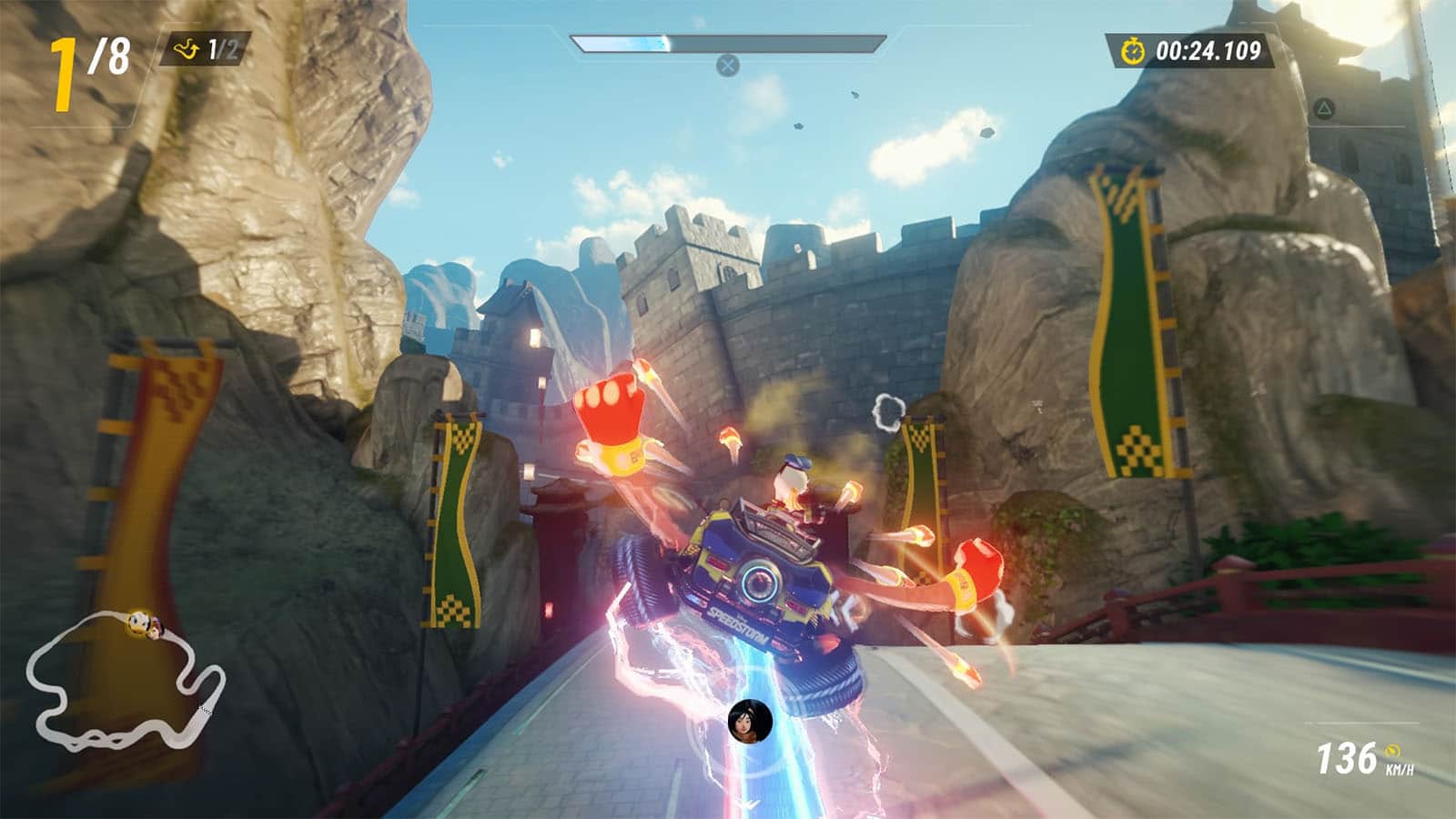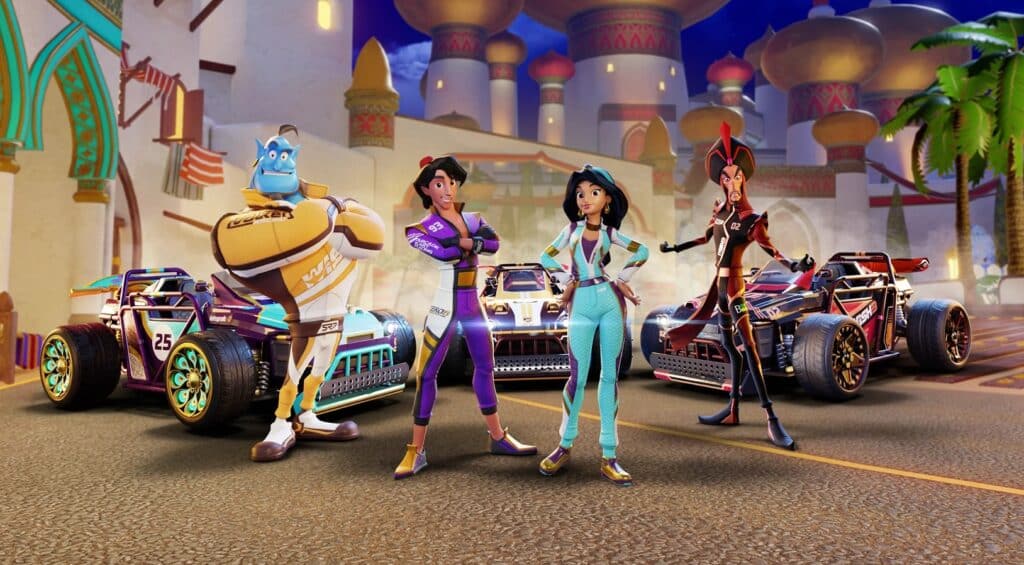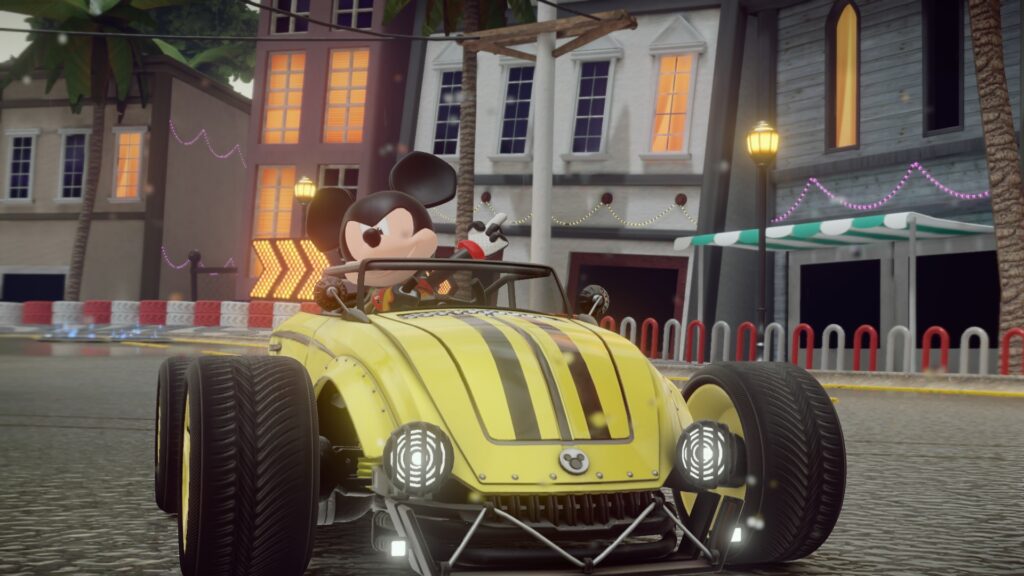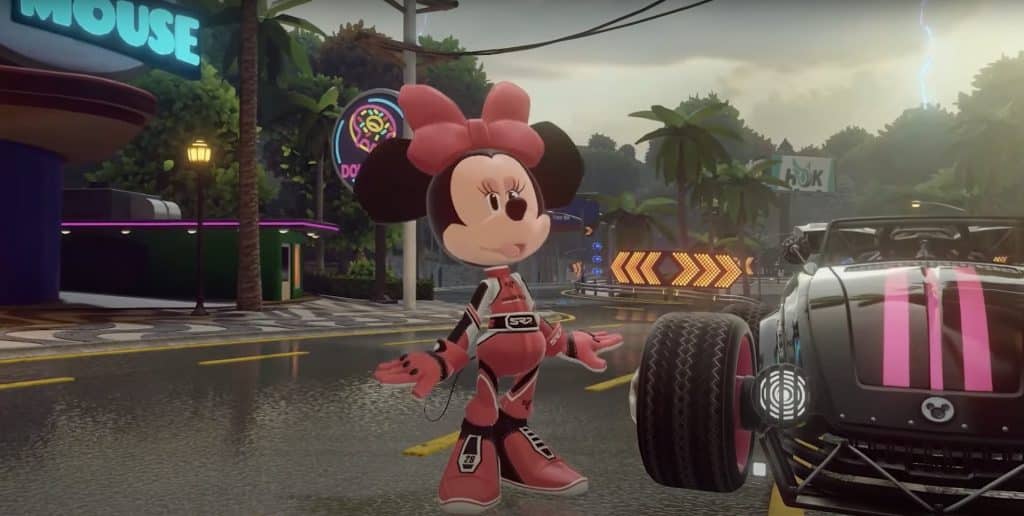Disney Speedstorm is a battle racing game that mixes in a bit more action into the standard racing game. What sets it apart from the popular names in the genre is its hero-based nature where racers based on characters from Disney franchises are given their own unique skill, giving players the opportunity to master different kinds of play styles. The game has been released in early access and we were given the chance to try out the game. Here are my thoughts about it.
Disney Speedstorm is just one of the few recent games that has been published by Gameloft, with the previous one being Disney Dreamlight Valley, a game that we have also covered. It gives players the opportunity to play as one of the numerous Disney characters from the franchise’s movies and shows, although the fun happens on the racetrack and behind the steering wheels. Since it’s also a live-service game, seasonal updates will be coming into the game to add more content, and possibly more characters into their racer roster.
The game itself is basically a racing game with no narrative that players have to follow. There are chapters, but they just serve as a way to bunch up the different races to have some semblance of a theme. Everyone just happens to be in a world where race tracks have been built into the different worlds of which these characters came from. The characters range from Mickey and his friends (of course), to Captain Jack Sparrow from The Pirates of the Caribbean, to even the recently announced Figment who is a major mascot figure in the Epcot theme parks.
The main focus of the game is its racing gameplay, and it is just one of the major highlights of Disney Speedstorm. The races definitely provide the thrill that one would expect in a battle racing game. The action of speeding through the tracks, drifting into corners, and using the plethora of skills to just blast away your opponents is undeniably fun. Even though the game is only starting with 18 racers, there is still enough variety to play around with and plenty more to expect as the game gets more updates in the future.
The races are quick and reasonably sized, and there are also a few more game modes that pop up from time to time to spice up the gameplay. Although I have yet to experience how multiplayer works as its servers were not up yet at the time of writing, playing against AI still provided some ample challenge. I do find that its adaptive difficulty is a bit too aggressive to the point that it overpowers the upgrades that I did sometimes, or maybe I was just imagining it. The game did suggest that it has adaptive difficulty, though.
The game is definitely fast paced on the tracks. However, the pace changes once you’re off the tracks and into the “garage” side of the game.
Being a hero-based game, all of the improvements outside of the player’s skills are put upon the characters/racers. Racers can be leveled up if you have enough resources to do so, which raises their inherent stats and make them perform better. There’s also the star-level system which provides larger amounts of boosts, as well as the crew system, which itself has its own set of star-levels. It is at this side of the game where I started to feel like I was driving on muddy road.
Not all racers will be unlocked in the beginning. Using Mickey for the first few races of the game, you get to collect racer shards, crew shards, and a seemingly random assortment of materials. These items are the stuff that you will need to unlock new racers, new crews, and upgrade racers, respectively. It is understandable that one would have to work hard to farm for these resources to improve ones roster. What makes the grind a little less fun are the limits that are set to make the grinding experience artificially longer.
The Starter Circuit, which can be considered as the game’s main campaign, has six chapters so far, three of which can only be played if you have unlocked the required characters. I managed to get two of these characters, allowing me to play two of the chapters, but I’m still missing Hercules.
At this point, the only way that I could get him is either by chance from pulling enough shards from the Universal Box (the game’s soft currency gacha), or I wait for a day or two and hope that one of the limited events offer his shards. There’s the Season Tour races that I can work on in the mean time, but since it’s a themed exclusive event, it doesn’t help me progress through the Starter Circuit.
It may just be because multiplayer has not been implemented yet when I played the game for this review, but as I am writing this right now, I’m looking at the chapters and I’ve played out most of the available tracks in the game (sans the one for Hercules). Sure, I can work on some of the objectives that I missed, but they’re not necessarily going to help me get the missing materials that I need to get Mike or Mulan to the next level. I’m in a waiting period until I can do my dailies again or until the multiplayers modes finally go live.
Speaking of multiplayer modes, the two modes that provide progression are the Ranked Multiplayer and the Regulated Multiplayer modes. Though I could not really talk much about these modes yet, I was interested at how the game’s microtransactions would affect the two and why there was a need for a regulated version of this multiplayer mode.
I spent some time looking through the FAQs of the game to really get a better understanding of how the Ranked Multiplayer mode works. The only statement that I saw that was relevant to my query is that players of the same level will be pitted against each other.
The thing with levels is that they are capped depending on the star-level of the racer, and you will need shards to raise this. As mentioned before, racer shards can be obtained just by playing the game or by luck from the universal box, and they can also be purchased using tokens. Based from the Founder’s Packs, the token is the currency that can be bought purchased using real money.
Just to give an idea on how impactful this is, the rewards obtained from getting into the higher ranks in Ranked Multiplayer include more racer shards and some more tokens. In comparison, the rewards given by ranking up in Regulated Multiplayer are just multiplayer coins and a skin along the way. Multiplayer coins, at least with how the shop looks like at this point, are just used to purchase cosmetics.
I don’t want to make this solely about the game’s microtransactions since we have yet to experience the multiplayer modes, but we can see where this is going. It’s not just a pay-to-win situation, but more like a pay-to-progress one that involves both singleplayer and multiplayer experiences. As a consolation, the game does have other multiplayer modes like the Local Freeplay and Private Track that can be played just entirely for fun and not for progression. Another notable thing about Local Freeplay is that it supports split-screen for up to 2 players and it’s the only mode that can be played even when offline.
Moving on to another aspect of the game: its visuals. The environment of the tracks, as well as the character models were great. The courses felt really great to drive through as some of them have been designed to make the tracks look organically melded throughout the environment, while some have their own kind of art styles that really work well with the themes.
If there was one thing that I liked the most in Disney Speedstorm, it is its soundtracks. The soundtracks are just amazing bangers; they really add up to the experience of the race. What usually gets me pumped is the remix of “I’ll Make a Man Out of You” which is a certified headbopper. If anything, I am looking forward to what other remixes will be added into the game as more maps become playable. If the people behind the game decide to put an album compilation of the soundtracks, I’d definitely get it.
As for the game’s performance, I’d say it worked relatively well on my PS4. I saw some noticeable asset loading moments which usually happen when loading into a map. There were also some minor stutterings when things get too busy. The game crashed on me only once, and I encountered a weird bug that was a result of a chance event. Despite all of that, they really are not deal-breakers and I’d chalk most of them up on my console’s performance.
To sum it all up, Disney Speedstorm is a really fun and thrilling battle racing game that is marred by the potentially unbalancing effects of its microtransactions and its time gates, both are byproducts of its live-service nature. I genuinely had fun playing the game up until the point where I had to wait for the next opportunity to get more resources. Mixing the fast-paced playing experience of a racing game with the laborious and lengthy grind just ends up with this weird and awkward product that just inhibits a good sense of momentum.
When I first learned about the game, I was really hoping that it would follow what Dreamlight Valley did when it came to is monetization model, and that it solely got applied on cosmetics. Disney Speedstorm is still in its early access period, so there’s still hope that some things might get changed in that area. As to the claims that Speedstorm will be the “Mario Kart killer”, I personally don’t think that it will be; both games still have distinct gameplays outside of their racing aspect and I think that Speedstorm could do more to really become the flagship battle racing game.

